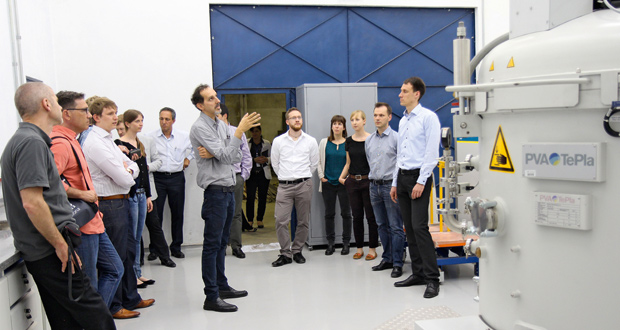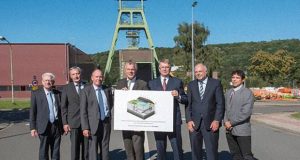Without them, a great deal of our essential modern technology would be inconceivable: Rare earth metals – known as “rare earths” for short – are used in wind turbines, LEDs, high-performance batteries and MRI scanners, to name a few. Unlike the name suggests, these metals are not actually rare, but their deposits are distributed unevenly around the globe. Today, over 90 % of rare earth production takes place in China. However, the planned “REGINA” research project aims to change this, with plans in place for the Georg Agricola Technical University (THGA), Bochum/Germany, and three universities, three extramural research institutions and a raw materials company to conduct the research. The project is intended to research new methods of extracting rare earths in Brazil, in addition to further processing, industrial applications and recycling. REGINA stands for “Rare Earth Global Industry and New Application”.
As preparation for the project, German and Brazilian partners attended workshops in São Paulo and Florianópolis (Brazil), in which Alfred Niski, Professor of Technical Business Administration at the THGA, was also taking part (Figure 1). “Today, Germany and other industrial nations are heavily dependent on China for rare earths,” says Professor Niski. “That also makes us jointly responsible for the major environmental damage and social issues arising from rare earth production in China. Cooperation with Brazil gives us the opportunity to improve environmental protection, occupational safety and increase competition.”
With around 22 mt of rare earth metals in its reserves, Brazil has the second largest source of rare earth metals in the world, after China (55 mt). However, these reserves are currently only being extracted and processed to a minor extent in the South American emerging market. The aim of the REGINA project is firstly to promote the on-site development of Brazilian reserves, and secondly, optimise the entire value creation from metal processing and application in high-tech products through to recycling. As an expert on the interface between engineering and economics, Professor Niski is due to work on the key areas of competitiveness and strategic market positioning. “With the support of German expertise, Brazil can become number two on the global rare earth market,” Niski explains. “Many industrial users in Germany would benefit just as much as the environment and those living in the mining regions.”
The joint workshop for all project partners in Brazil was an important milestone in order to analyse the starting situation and develop the next strategy. The project is to be funded by the Federal Ministry of Education and Research (BMBF) as part of the “CLIENT II – Internationale Partnerschaften für nachhaltige Innovationen” (International Partnerships for Sustainable Innovation) programme. (THGA/Si.)


